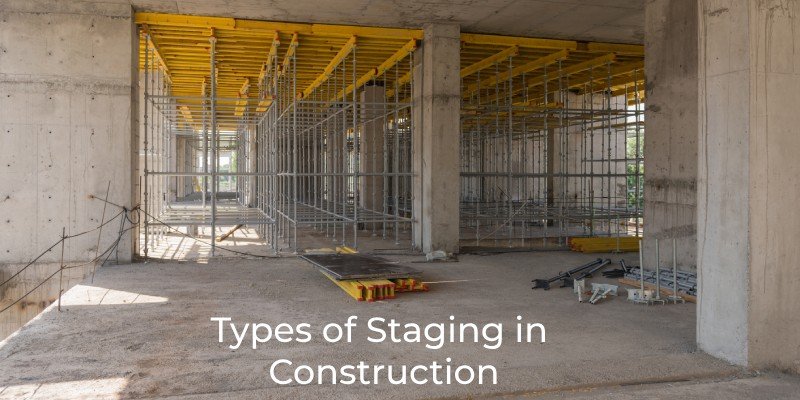Top 12 Types of Stone Used in Construction: Pros and Cons
When it comes to constructing durable and aesthetically pleasing structures, the choice of building materials plays a crucial role. Among the myriad of options available, natural stone stands out for its timeless elegance and durability. In this article, we’ll explore the top 12 Different Types of Stone Used in Construction, highlighting their respective pros and cons to help you make informed decisions for your next project.
12 Different Types of Stone Used in Construction
Let’s explore 12 Different Types of Stone Used in Construction:
1. Granite

Granite is a popular choice for construction due to its durability, versatility, and aesthetic appeal. This igneous rock is formed from the slow crystallization of magma beneath the Earth’s surface, resulting in a dense and durable material.
Pros:
- Durability: Highly resistant to scratches, heat, and stains, ideal for high-traffic areas.
- Aesthetics: Unique veining and patterns add elegance to any space.
- Availability: Widely available in various colours and patterns.
- Low Maintenance: Requires minimal upkeep when properly sealed.
Cons:
- Cost: It can be relatively expensive, especially for rare varieties.
- Weight: Heavy and difficult to install, often requiring professional expertise.
- Limited Color Range: Some homeowners may find options limited compared to other stones.
- Susceptibility to Chipping: Despite durability, it can chip if subjected to heavy impacts.
2. Marble
Marble exudes luxury and sophistication, making it a popular choice for high-end construction projects. This metamorphic rock is formed from limestone subjected to intense heat and pressure, resulting in its characteristic veining and smooth texture.
Pros:
- Luxurious Appearance: Elegant veining and lustrous surface add timeless charm.
- Cool to the Touch: Stays cool in hot climates, ideal for flooring and countertops.
- Versatility: Available in various colours and finishes for endless design possibilities.
- Natural and Unique: Each slab is one-of-a-kind, adding exclusivity to projects.
Cons:
- Vulnerability to Staining: Porous and prone to staining, especially from acidic substances.
- Cost: Considered luxury and comes with a hefty price tag.
- High Maintenance: Requires regular sealing and upkeep to prevent etching.
- Durability Concerns: Softer and more prone to scratches and chips compared to granite.
3. Limestone
Limestone is a versatile sedimentary rock widely used in construction for its affordability and ease of processing. This rock is formed from the accumulation of calcium carbonate sediments over millions of years, often in marine environments.
Pros:
- Versatility: Available in various colours and textures for diverse applications.
- Cost-Effectiveness: Relatively inexpensive compared to other stones.
- Natural Beauty: Subtle veining and earthy tones add warmth and character.
- Ease of Processing: Soft and easy to cut, shape, and carve for intricate designs.
Cons:
- Porosity: Susceptible to moisture absorption, leading to staining and deterioration.
- Durability Concerns: Softer and more prone to scratching and erosion compared to granite.
- Limited Resistance to Acids: Sensitive to acidic substances, which can etch the surface.
- Weathering: Exposure to harsh conditions can accelerate deterioration, especially outdoors.
4. Sandstone

Sandstone is a popular choice for construction due to its natural beauty, durability, and versatility. This sedimentary rock is composed of sand-sized grains of mineral, rock, or organic material cemented together by silica, calcium carbonate, or iron oxide.
Pros:
- Natural Appearance: Distinctive texture and earthy colours add warmth.
- Porosity: Allows good water drainage, suitable for outdoor use.
- Weathering: Develops a unique patina over time, enhancing aesthetic appeal.
- Limited Color Range: Available in various hues for versatile design options.
Cons:
- Porosity: Susceptible to staining and water damage without proper sealing.
- Limited Color Range: This may not offer as much variety as other stones.
- Weathering: Surface degradation over time may affect appearance.
- Limited Applications: Not suitable for high-traffic or heavy-duty use due to softness.
5. Slate
Slate is a metamorphic rock prized for its durability, unique texture, and rich colour variations. Formed from shale subjected to intense heat and pressure, slate is renowned for its versatility and suitability for a wide range of applications.
Pros:
- Durability: Highly resistant to scratches, stains, and moisture.
- Aesthetics: Distinctive texture and rich colours add elegance.
- High Cost: Considered premium, offering luxury without the high price.
Cons:
- Limited Availability: Scarce quarries may lead to higher costs.
- High Cost: Relatively expensive compared to other materials.
- Vulnerability to Acids: Susceptible to etching and staining from acidic substances.
- Fragility: Despite durability, prone to chipping and cracking if mishandled.
6. Travertine
Travertine is a unique form of limestone characterized by its porous texture, distinctive veining, and warm, earthy tones. Formed from the precipitation of calcium carbonate minerals in mineral-rich hot springs, travertine is prized for its natural beauty and versatility.
Pros:
- Unique Appearance: Distinctive veining and natural pits offer rustic elegance.
- Porosity: Allows good water drainage, ideal for outdoor use.
- Cost: More affordable than marble or granite, offering luxury at a lower price.
- Vulnerability to Acids: Susceptible to etching and staining if not promptly cleaned.
Cons:
- Limited Color Range: Primarily warm earthy tones, limiting design options.
- Porosity: Prone to staining and water damage without proper maintenance.
- Cost: Still relatively expensive compared to alternative materials.
- Limited Applications: Not suitable for high-traffic or heavy-duty use due to softness.
7. Quartzite
Quartzite is a durable and versatile metamorphic rock prized for its strength, durability, and aesthetic appeal. Formed from sandstone subjected to high heat and pressure, quartzite boasts a unique combination of beauty and resilience.
Pros:
- Strength and Durability: Highly resistant to scratches, heat, and impacts.
- Aesthetics: Natural sparkle and a wide colour range add sophistication.
- Cost: More affordable than marble, offering luxury at a lower price.
- Limited Color Range: Offers a variety of colours and patterns for versatility.
Cons:
- Limited Availability: It may not be as readily available as granite or marble.
- Cost: Still considered premium, with a higher price tag compared to other materials.
- Limited Resistance to Acids: Susceptible to etching and staining from acidic substances.
- Limited Color Range: Some homeowners may find options limited compared to other stones.
8. Basalt
Basalt is a volcanic rock prized for its strength, durability, and natural beauty. Formed from the rapid cooling of lava flows, basalt boasts a distinctive texture, rich colour variations, and exceptional durability.
Pros:
- Strength: Highly resistant to scratches, heat, and impacts.
- Thermal Properties: Ideal for applications requiring heat resistance.
- Limited Color Range: Offers versatility in design with various colours.
- Cost: More affordable than premium stones like marble or granite.
Cons:
- Limited Color Range: This may not offer as much variety as other stones.
- Cost: Still relatively expensive compared to alternative materials.
- Limited Availability: Scarce quarries may lead to higher costs.
- Susceptibility to Acid: Vulnerable to etching and staining from acidic substances.
9. Onyx
Onyx is a strikingly beautiful natural stone known for its translucent properties and unique veining patterns. Formed from the slow crystallization of calcium carbonate minerals in limestone caves, onyx is prized for its luxurious appearance and versatility.
Pros:
- Translucency: Allows light to pass through, creating a mesmerizing glow.
- Fragility: Soft and delicate, ideal for decorative applications.
- Cost: Luxury material at a lower price compared to marble or granite.
- Limited Applications: Not suitable for high-traffic or heavy-duty use.
Cons:
- Fragility: Susceptible to scratching, chipping, and cracking if mishandled.
- Limited Color Range: Primarily warm earthy tones, limiting design options.
- Cost: Still relatively expensive compared to alternative materials.
- Limited Applications: Not suitable for high-traffic or heavy-duty use.
10. Soapstone

Soapstone is a durable and versatile metamorphic rock prized for its heat resistance, natural beauty, and unique texture. Formed from the metamorphism of talc-rich rocks, soapstone boasts a smooth, soft texture and a range of subtle colours.
Pros:
- Heat Resistance: Highly resistant to heat, ideal for various applications.
- Softness: Easy to carve and work with for custom designs.
- Limited Color Range: Offers subtle colors for versatile design.
- Maintenance Requirements: Relatively low maintenance compared to other stones.
Cons:
- Softness: Prone to scratching and denting, especially in high-traffic areas.
- Limited Color Range: This may not offer as much variety as other stones.
- Limited Applications: Not suitable for high-traffic or heavy-duty use.
- Maintenance Requirements: May require periodic oiling to maintain appearance.
11. Tuff
Tuff is a porous and lightweight volcanic rock formed from the consolidation of volcanic ash and other volcanic materials. Prized for its affordability and ease of processing, tuff is commonly used in construction for its versatility and aesthetic appeal.
Pros:
- Porosity: Allows good water drainage, suitable for outdoor use.
- Softness: Easy to work with for intricate designs.
- Cost-Effectiveness: Affordable option for various applications.
- Availability: Widely available in various colours and textures.
Cons:
- Porosity: Susceptible to staining and water damage without proper maintenance.
- Softness: Prone to scratching, chipping, and weathering, especially in high-traffic areas.
- Limited Applications: Not suitable for high-traffic or heavy-duty use.
- Limited Resistance to Acids: Vulnerable to etching and staining from acidic substances.
12. Schist
Schist exhibits a medium to coarse-grained texture and pronounced foliation, imparting a layered appearance. It forms through the metamorphism of shale or mudstone, making it highly valued for its distinct texture, vibrant colors, and robustness.
Pros:
- Unique Texture: Schist’s layered appearance adds visual interest.
- Rich Colors: Versatile range from deep grays to warm browns.
- Durability: Resistant to scratches, heat, and impacts.
- Availability: Widely accessible and affordable.
Cons:
- Foliation: Prone to splitting along layers.
- Limited Applications: Not suitable for smooth surfaces.
- Maintenance: Requires regular sealing and care.
- Cost: Relatively expensive compared to alternatives.
Conclusion
We have covered a detailed guide on 12 Different Types of Stone Used in Construction. The choice of stone plays a crucial role in the durability, aesthetics, and functionality of construction projects. Each type of stone offers its own unique advantages and disadvantages, and it’s essential to consider factors such as durability, cost, maintenance requirements, and design preferences when selecting the right stone for your project. By weighing the pros and cons of each type of stone carefully, you can make informed decisions that ensure the success and longevity of your construction endeavours.
FAQs
- What is the most durable type of stone for construction? The most durable type of stone for construction is generally granite, quartzite, or basalt, which are known for their exceptional strength and resistance to scratches, heat, and impacts.
- Which type of stone is the most cost-effective? Limestone and tuff are often considered the most cost-effective options for construction due to their affordability and availability.
- What factors should I consider when selecting stone for construction? When selecting stone for construction, consider factors such as durability, aesthetics, cost, maintenance requirements, and suitability for the intended application.
- How can I maintain the appearance of stone used in construction? To maintain the appearance of the stone used in construction, regularly clean and seal the surface as recommended by the manufacturer, avoid using acidic or abrasive cleaners, and address any stains or damage promptly.
- Are there any eco-friendly options among the types of stone used in construction? Some types of stone, such as limestone and tuff, are considered more eco-friendly options for construction due to their abundance, low environmental impact during extraction and processing, and recyclability.





